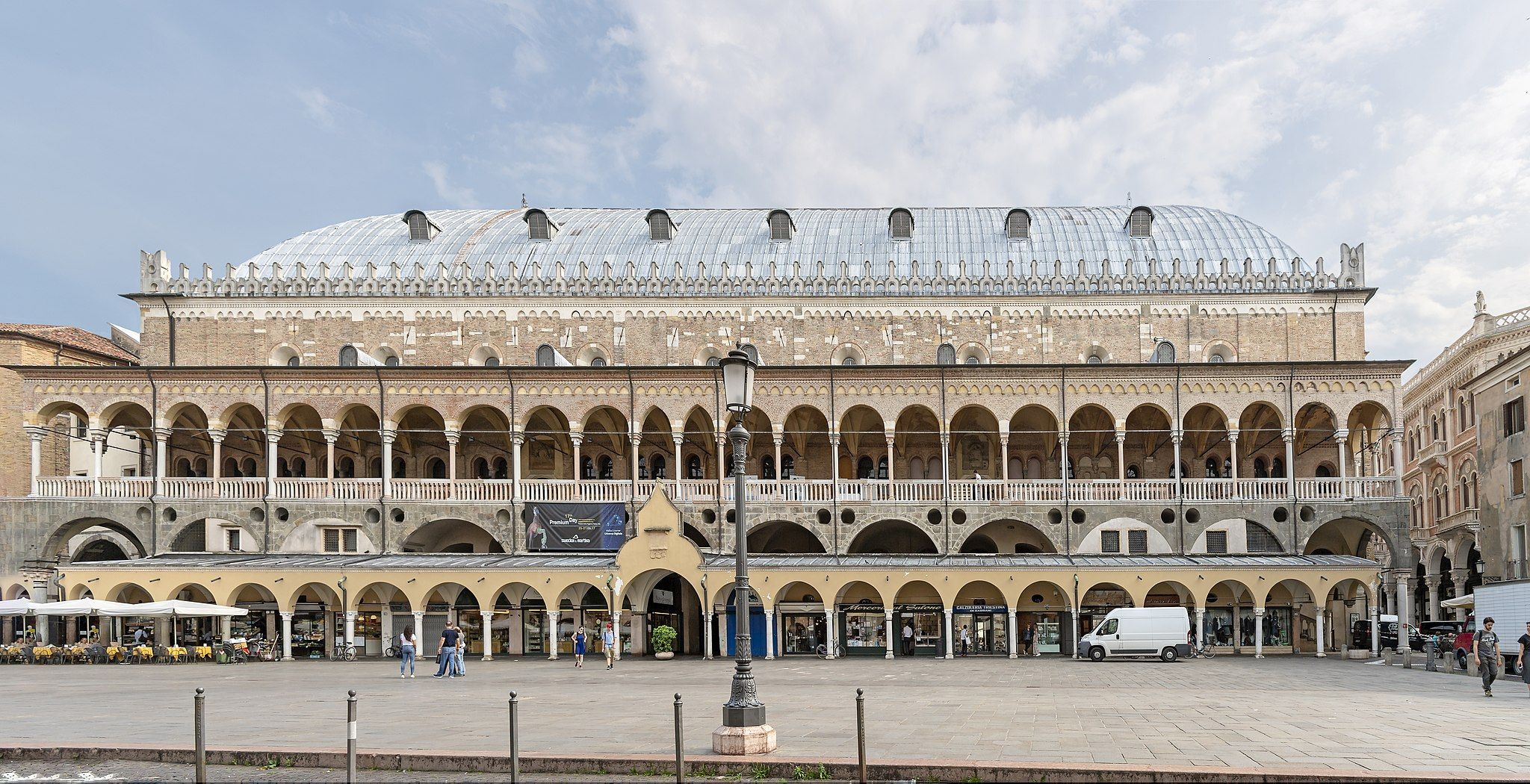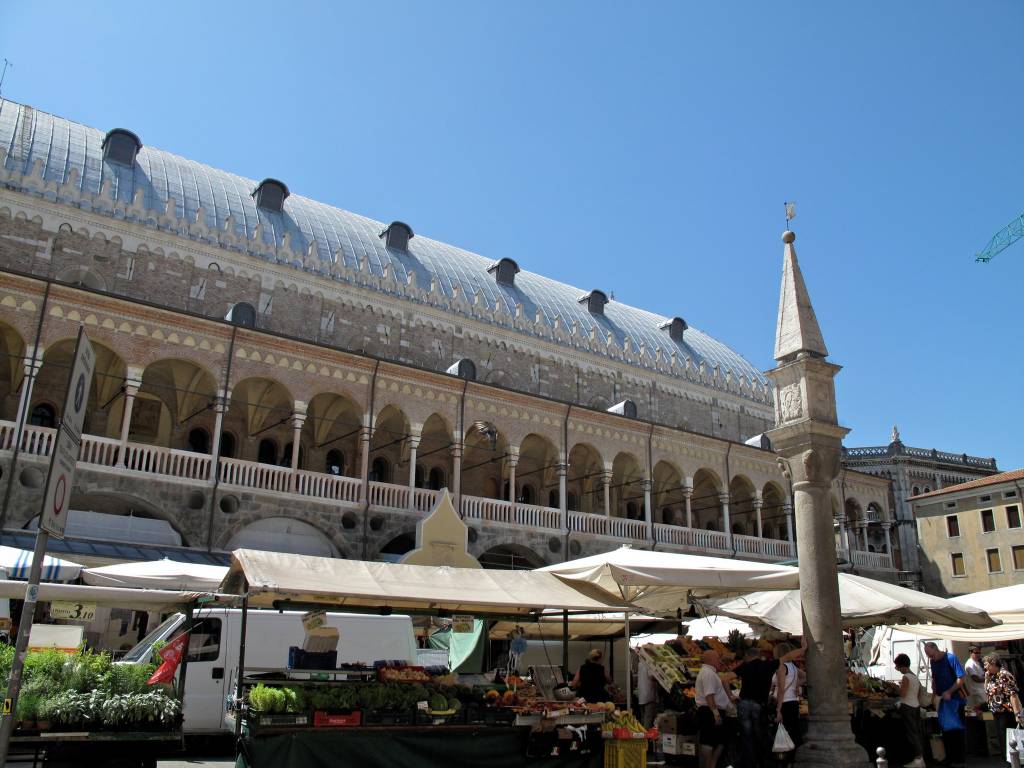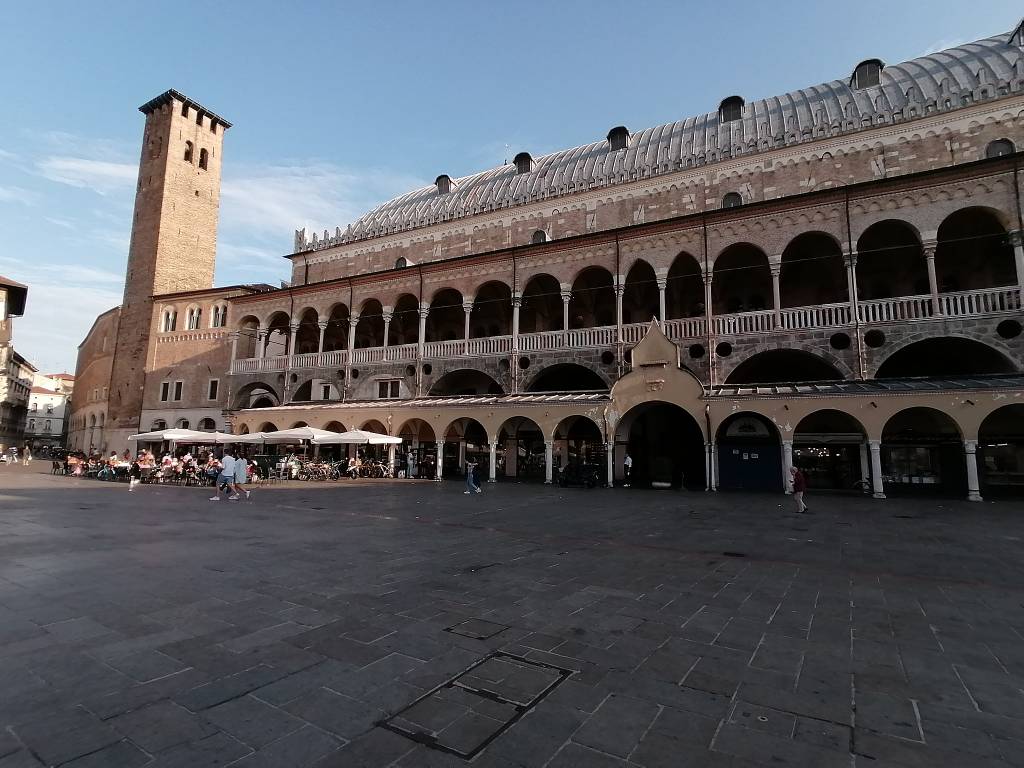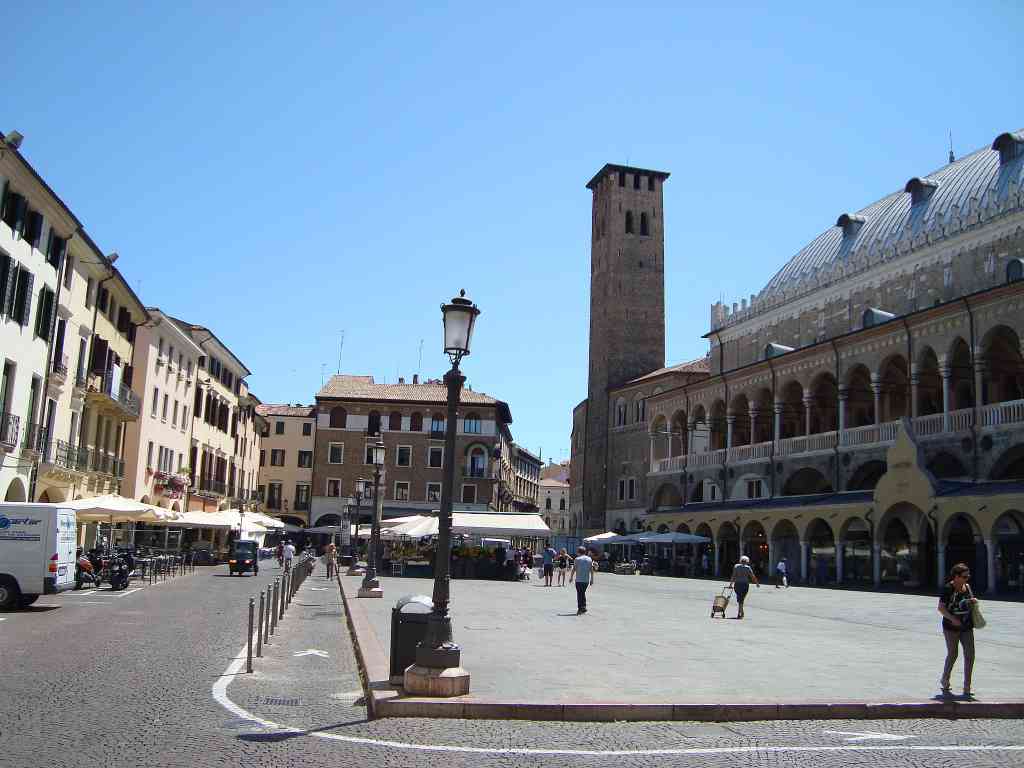Piazza della Frutta
Piazza della Frutta, once called Piazza del Peronio, has been the commercial heart of Padua for centuries.
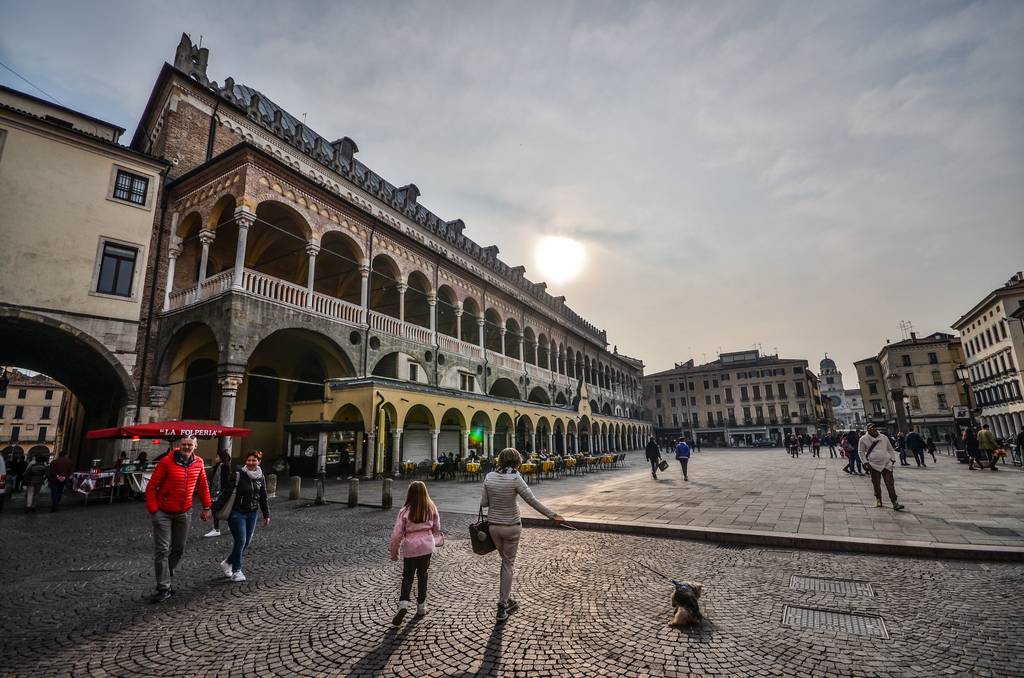
Piazza della Frutta is characterised by the imposing stature of the Palazzo della Ragione, which separates the first from the Piazza delle Erbe. The highest medieval tower extant in Padua, Torre degli Anziani, set between two other medieval palazzos, is a reminder of the history behind the square.
The area was the seat of trade since the Roman age, but the square was born in the Middle Ages and consolidated in its current conformation in the thirteenth century, with the construction of the Palazzo della Ragione. In the square were sold fish and game, eggs and poultry, roasted meat, fruit and vegetables, and precious birds, such as falcons. There were also clothing, accessories, leather goods, and footwear among the goods on sale. The two stairways, Scala delle Erbe and Scala degli Osei, leading to the Palazzo della Ragione upper hall, took their name from the goods sold in those areas of the square: vegetables and birds.
The ancient affairs of the square are still enduring. On weekdays the market stalls occupy the square from morning until late afternoon. The wooden stalls are on wheels and are removed from the square at the end of the day. All around the square are shops and bars with outdoor tables. Among these stand out the Antico Forno Vecchiato, a historic bakery-pastry shop specialising in baked goods, which also serves an excellent hot chocolate, and the Pasticceria Graziati, one of the oldest artisan pastry shops in the city, particularly famous for its unsurpassed millefeuille cake.
Column of Peronio
In the centre of the square is the Column of Peronio, a medieval column surmounted by a capital above which rests a small obelisk in Istrian stone.
The name Peronio derives from the Latin term perones, a term used for the shoes sold near the column. At the corners of the capital are depicted a pumpkin, a palm, an apple and a pear tree, confirming the commercial vocation of the square.
The obelisk is decorated with a bas-relief of one of the city’s patron saints, Saint Prosdocimus, and the city’s coat of arms.
Ai Due Catini D'Oro
Overlooking the square from the closed space of the loggia of Palazzo del Consiglio is the oldest shop in the city, the ancient apothecary Ai Due Catini D'Oro.
Opened during the eighteenth century as an apothecary, it preserves its period furniture and shelves and the original shop sign exposed inside, a scale with two gold basins. The window shop arrangement dates back to 1841.
Volto della Corda
Inside the closed loggia of the Palazzo del Consiglio, there is a famous space called Canton de le busie (The corner of lies), so-called because here were exposed the dishonest traders. On the opposite corner, on a pilaster of Palazzo della Ragione, are still visible the carved Paduan units of measurement used to avoid scams.
Above the Canton de le busie, bridging the Palazzo del Consiglio with Palazzo della Ragione, is the Volto della Corda (The face of the rope), an aerial passage built at the beginning of the fourteenth to connect the municipal buildings. It’s own its name to the fact that at this point, swindlers and insolvent were publicly whipped with a rope. The ropes were always on display to remind traders and buyers to be honest.
The archway connects Piazza della Frutta and Piazza delle Erbe, entwining the two main squares and ancient centres of Paduan trade.
We welcome all contributions, no matter how small. Even a spelling correction is greatly appreciated.
All submissions are reviewed before being published.
Continue to changelog-

© 'Market in Piazza della Frutta, Padua. In background, Palazzo della Ragione' by Alain Rouiller is licensed under CC BY-SA 4.0 Attribution copied to clipboard Failed copying attribution to clipboard -

© 'Palazzo della Ragione from Piazza della Frutta' by Didier Descouens is licensed under CC BY-SA 4.0 Attribution copied to clipboard Failed copying attribution to clipboard -

© 'Palazzo della Ragione, lato Piazza della Frutta, con Palazzo degli Anziani e Torre del Comune' by Paola Rubinato is licensed under CC BY-SA 4.0 Attribution copied to clipboard Failed copying attribution to clipboard -

We welcome all contributions.
All submissions are reviewed before being published.
We welcome all contributions, no matter how small. Even a spelling correction is greatly appreciated.
All submissions are reviewed before being published.
Continue to changelogPiazza della Frutta
We welcome all contributions, no matter how small. Even a spelling correction is greatly appreciated.
All submissions are reviewed before being published.
Continue to changelogWe welcome all contributions, no matter how small. Even a spelling correction is greatly appreciated.
All submissions are reviewed before being published.
Continue to changelogCategory
Cost
-
The Palazzo della Ragione, built in the Middle Ages as the seat of the city courts, still hosts on the ground floor one of the oldest European markets
-
A true miracle of architectural audacity and an impressive collection of fourteenth-century mural paintings, the only secular and civil commission executed by Giotto in Padua
-
The Church of San Clemente is a small Baroque-style Roman Catholic church with an ancient history overlooking the Piazza dei Signori.
-
107 m
Piazza delle Erbe, one of the two squares that embrace the Palazzo della Ragione, is the temple of the Spritz cult and one of the most popular socializing places in Padua.
-
120 m
Palazzo Moroni, the usual name for the Municipal Buildings, is a complex of buildings in the city’s heart that house the offices of the Municipality of Padua.
